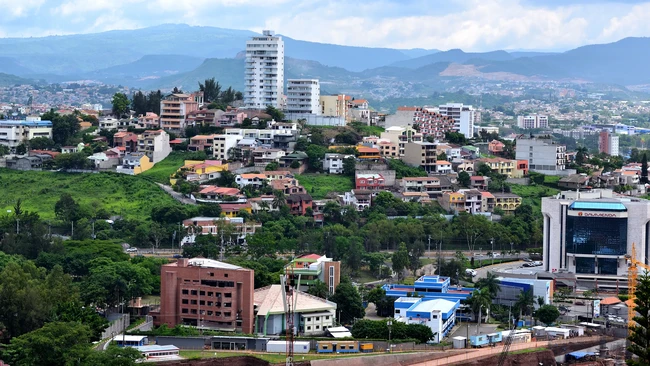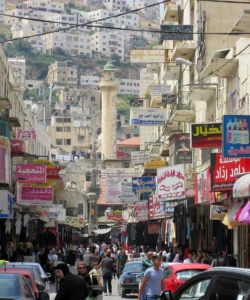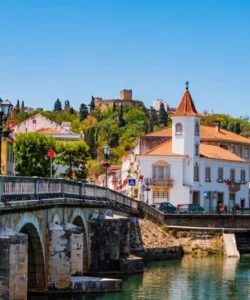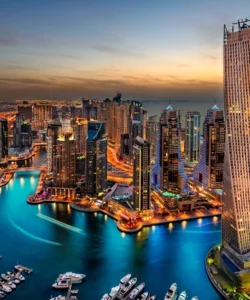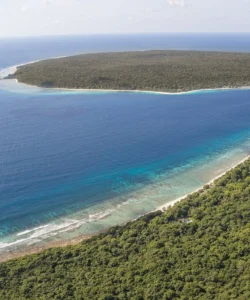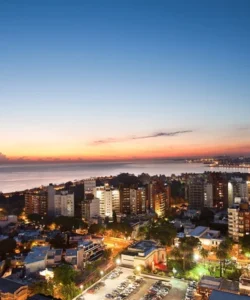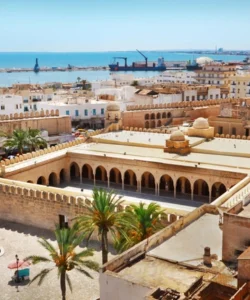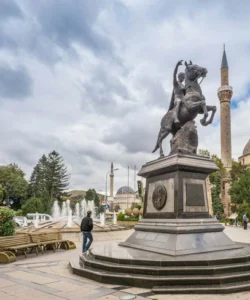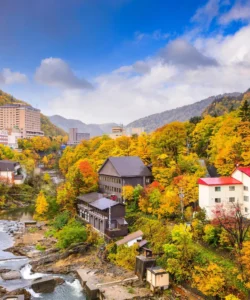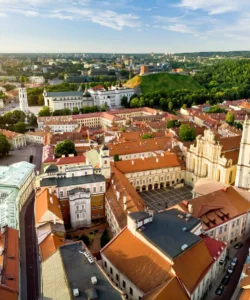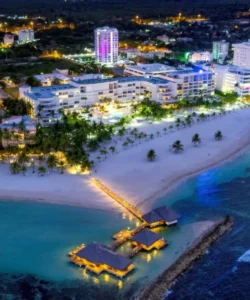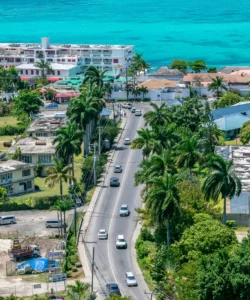Honduras is a Central American country with Caribbean Sea coastlines to the north and the Pacific Ocean to the south. It is known for its rich Mayan history, incredible biodiversity (especially marine life), and diverse landscapes that include mountains, rainforests, and vibrant coral reefs.
![]()
Area and Population:
Honduras covers an area of approximately 112,492 km² (43,433 sq mi). Its population is estimated to be around 10.9 million inhabitants (as of 2024).
Language:
The official language of Honduras is Spanish. English is widely spoken in the Bay Islands (Roatán, Utila, Guanaja) due to historical British influence and tourism. Various indigenous languages, such as Garifuna and Miskito, are also spoken by their respective communities.
Currency:
The currency of Honduras is the Honduran Lempira (HNL). U.S. dollars are widely accepted in many tourist areas, particularly the Bay Islands.
Religion:
The predominant religion in Honduras is Christianity. While Catholicism is historically the largest denomination, Protestantism, particularly Evangelical and Pentecostal denominations, has experienced significant growth and now accounts for a very large portion of the population.
Capital:
The capital city of Honduras is Tegucigalpa, nestled in a mountain valley in the central highlands. It is the country’s largest city and its political and economic center.
Major Cities:
Besides Tegucigalpa, other significant cities and towns in Honduras include:
- San Pedro Sula: The second-largest city and the industrial and commercial center of the country.
- La Ceiba: A major port city on the Caribbean coast, known as the “Eco-Tourism Capital of Honduras” and a gateway to the Bay Islands and Pico Bonito National Park.
- Copán Ruinas: A charming colonial-style town in western Honduras, the gateway to the famous Copán Mayan ruins.
- Tela: A coastal town on the Caribbean, known for its botanical gardens and proximity to national parks.
- Roatán: The largest of the Bay Islands, a major tourist destination for diving and beaches.
Attractions and Wonders:
Honduras offers a blend of ancient history, natural beauty, and adventure.
- Copán Ruins: A UNESCO World Heritage site and one of the most important and artistically significant Mayan archaeological sites. It’s famous for its intricate stelae (carved stone monuments), altars, hieroglyphic stairway, and impressive ball court.
- Bay Islands (Roatán, Utila, Guanaja): Located on the Mesoamerican Barrier Reef System (the second-largest barrier reef in the world), these islands are a diver’s paradise.
- Roatán: Known for its stunning coral reefs, clear waters, white-sand beaches, and vibrant tourism infrastructure. Popular for diving, snorkeling, and water sports.
- Utila: Smaller and more laid-back, particularly popular with budget travelers and those seeking dive certifications (especially for whale sharks).
- Pico Bonito National Park: A vast and biodiverse national park near La Ceiba, offering lush rainforest, towering peaks, numerous rivers, and waterfalls. Ideal for hiking, white-water rafting (Río Cangrejal), and wildlife spotting.
- Lake Yojoa (Lago de Yojoa): Honduras’s largest lake, a renowned birdwatching destination with over 400 species. Surrounded by coffee plantations and the Santa Bárbara National Park.
- Lancetilla Botanical Garden: Near Tela, one of the largest tropical botanical gardens in the world, with an impressive collection of fruit trees, plants, and diverse birdlife.
- Gracias: A charming colonial town in the western highlands, home to the Fuerte San Cristóbal and a gateway to Celaque National Park.
- Celaque National Park: Home to Honduras’s highest peak, Cerro Las Minas, offering challenging hiking and cloud forest ecosystems.
- La Tigra National Park: A cloud forest reserve close to Tegucigalpa, offering hiking trails and opportunities to spot quetzals and other wildlife.
- Cayos Cochinos: A pristine archipelago off the coast, a protected marine monument with stunning coral reefs and a laid-back atmosphere, often visited on day trips from La Ceiba or Roatán.
Architecture:
Honduran architecture reflects its Spanish colonial past, with influences of indigenous and later republican styles.
- Colonial Architecture: Evident in the historic centers of cities like Tegucigalpa (though less preserved than some other capitals), Comayagua (the former capital), and particularly charming in Copán Ruinas and Gracias. Churches, cathedrals, and old government buildings showcase these styles.
- Republican and Neoclassical: Many public buildings from the late 19th and early 20th centuries reflect these European influences.
- Modern Urban Design: Tegucigalpa and San Pedro Sula feature contemporary high-rises and commercial developments.
- Traditional Rural Homes: Simple adobe or wooden homes are common in rural areas.
Roads:
Honduras’s road infrastructure has been improving, but conditions vary. Major highways connecting principal cities (like the one between Tegucigalpa and San Pedro Sula) are generally paved and in decent condition. However, many secondary roads, especially those leading to national parks, rural areas, or specific attractions, can be unpaved, prone to potholes, and challenging, particularly during the rainy season. Public bus transportation is extensive, affordable, and a common way to travel between towns, though comfort levels vary.
Hotels:
Honduras offers a range of accommodation options. In major cities, you’ll find international chain hotels, business hotels, and local hotels. The Bay Islands (especially Roatán) have a wide array of resorts, dive lodges, boutique hotels, guesthouses, and hostels catering to tourists. In other towns and near national parks, options range from charming local hotels to eco-lodges and more rustic accommodations.
Restaurants and Cuisine:
Honduran cuisine is hearty, flavorful, and based on corn, beans, rice, and a variety of meats and seafood. It shares similarities with other Central American cuisines but has its own distinct specialties.
- Key Dishes:
- Baleadas: The national dish and a quintessential Honduran food. A thick flour tortilla folded in half, filled with refried beans, cheese, and mantequilla (a type of sour cream). Often additional fillings like scrambled eggs, avocado, or various meats (chicken, beef, pork) are added (known as baleadas con todo).
- Sopa de Caracol: A creamy and flavorful conch soup, a popular Caribbean coast specialty.
- Plato Típico: A typical plate usually featuring grilled meat (beef, chicken, or pork), rice, beans, plantains, a small salad, and sometimes cheese or avocado.
- Tamales: Similar to those in other Central American countries, corn dough filled with chicken or pork, rice, potatoes, and vegetables, wrapped in plantain leaves and steamed.
- Machuca con Pescado Frito: A Garifuna dish, mashed plantains (machuca) served with fried fish and a coconut milk-based soup.
- Yojoa Fried Fish (Mojarra Frita): Fresh fish from Lake Yojoa, typically fried whole and served with pickled onions and plantain chips.
- Pastelitos: Small, fried savory pastries filled with ground meat or vegetables.
- Pupusas: Similar to El Salvador’s, though less common as a national dish.
- Rosquillas: Hard cheese and cornmeal donuts, a popular snack.
- Restaurants: In major cities, you’ll find a variety of restaurants, from local eateries serving traditional Honduran food to international cuisine. On the Bay Islands, seafood restaurants are abundant, often serving fresh catches. Local markets and street food vendors are excellent for trying authentic snacks and quick meals.
